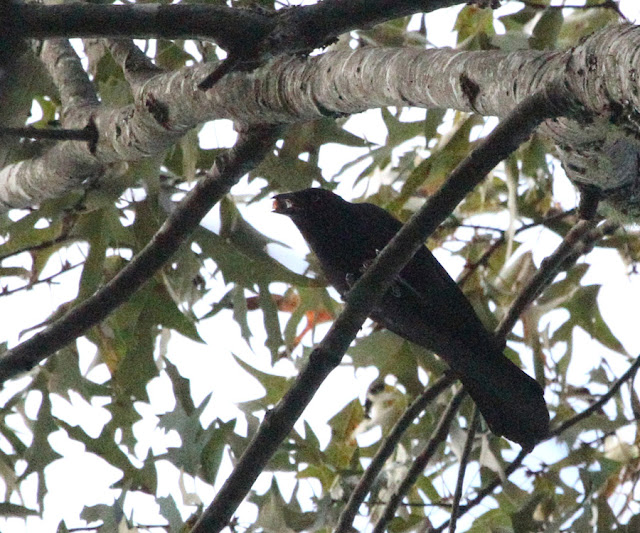Juvenile Rose-breasted Grosbeak watercolor sketch by Vickie Henderson
For those of us who love birds and love to watch them, we have a ready-made source of enjoyment no matter where we are. Autumn, a season of migration, presents delightful opportunities to see birds that only visit our yards briefly enroute to wintering grounds. This season, the birds that caught my eye were the colorful Rose-breasted Grosbeaks.
Even though Rose-breasted Grosbeaks are feeder friendly, they are also shy, a shyness almost equal to our flighty American Goldfinches. Definitely not the boldness of the Carolina Chickadees, Tufted Titmice or Northern Cardinals that frequent the feeders. I had snapped a couple of grosbeak images through the window, but did not find these very satisfying, especially since the red, brown and black patterns on each immature bird varied so greatly and were so much fun. Natural birdy watercolors. Splashes of color and unique shapes while feathers morph into patterns that more resemble parents.

Hoping to be as non-threatening as the stone wall behind me, I settled myself on my porch a distance away, camera in hand. Being still has its rewards! My first surprise was the arrival of our resident male Hairy Woodpecker. He alerts all to his presence with his loud chirps, much to my appreciation. I loved that he hung around on a trunk for a few photos while he checked out the rainy day crowd at the feeders.
Next, Red-breasted Nuthatches! An irruptive species that we only see in Tennessee when conditions bring them farther south for food. Fiesty little nuthatches with distinctive personalities, they fly in fearlessly and leave just as swiftly except when they want to display a nut meat?
This nuthatch held his nut piece high in the air and turned his head this way and that way, as though displaying it to other nuthatches?
Later I heard a "convention" of nuthatches over my head having a big discussion, everybody "talking at once"! "Toutie, tou, tou, tou, toutie-tou." I even searched for an owl as a possible reason for their excited vocalizations. I would have loved to have been able to count them. Just how many nuthatches was I seeing and hearing? Was it just two or a whole flock?
I did find a shy immature male Rose-breasted Grosbeak, hiding in the leaves near the feeders. Patience rewarded me with a clear view as he finally ventured more into the open after a few minutes.
Without a doubt, being still draws you deeper into the natural world around you, stirring renewal and wonder. For an instant, you are present, transported, and a part of it. Alive and curious. Armed with more questions than answers, you leave that moment reluctantly but satisfied and eager to do it again!


























































